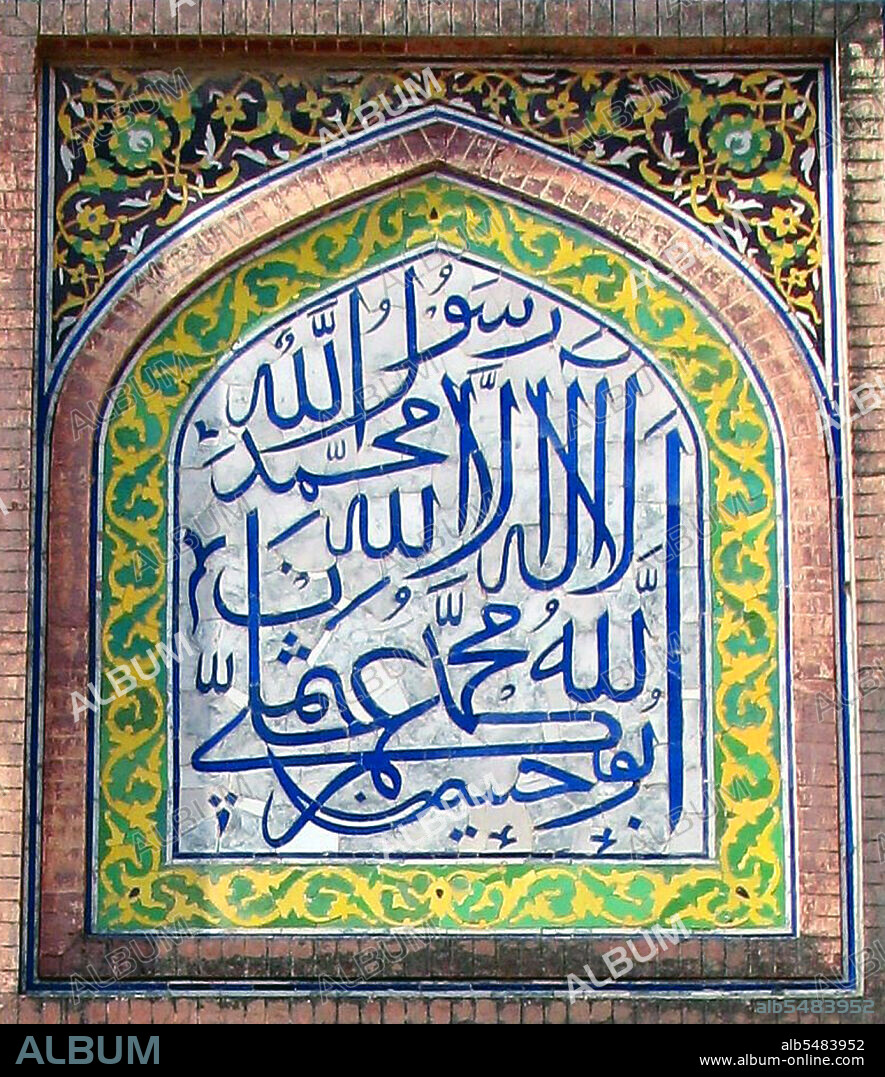alb5483952
Arabic calligraphy on glazed tiles, Wazir Khan Mosque, Lahore.

|
Añadir a otro lightbox |
|
Añadir a otro lightbox |



¿Ya tienes cuenta? Iniciar sesión
¿No tienes cuenta? Regístrate
Compra esta imagen.
Selecciona el uso:

Título:
Arabic calligraphy on glazed tiles, Wazir Khan Mosque, Lahore.
Descripción:
Ver traducción automática
The Wazir Khan Mosque (Masjid Wazir Khan) in Lahore, Pakistan, is celebrated for its extensive faience tile work. It has been described as 'a beauty spot on the cheek of Lahore'. It was built in seven years, starting around 1634-1635, during the reign of the Mughal Emperor Shah Jehan. It was built by Shaikh Ilm-ud-din Ansari, a native of Chiniot, who rose to be the court physician to Shah Jahan and later, the Governor of Lahore. He was commonly known as Wazir Khan. The mosque is located inside the Inner City and is easiest accessed from Delhi Gate. (Photo by: Atif Gulzar/Pictures From History/Universal Images Group via Getty Images)
Crédito:
Album / Pictures From History/Universal Images Group
Autorizaciones:
Modelo: No - Propiedad: No
¿Preguntas relacionadas con los derechos?
¿Preguntas relacionadas con los derechos?
Tamaño imagen:
3922 x 4536 px | 50.9 MB
Tamaño impresión:
33.2 x 38.4 cm | 13.1 x 15.1 in (300 dpi)
Palabras clave:
ARABE • ARCHITECTURAL • ARCHITECTURE • ARQUITECTONICA • ARQUITECTONICO • ARQUITECTURA • ART • ARTE • ARTES • ASIA • ASIATICO • CALIGRAFIA • HISTORIA • HISTORICO • INDIA • ISLAM • ISLÁMICO • MEZQUITA • MUSULMAN • PAKISTAN • RELIGION
 Pinterest
Pinterest Twitter
Twitter Facebook
Facebook Copiar enlace
Copiar enlace Email
Email
